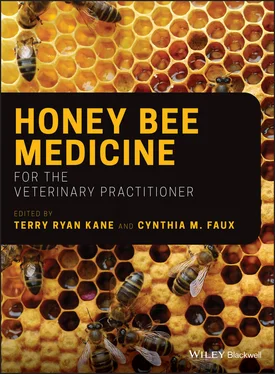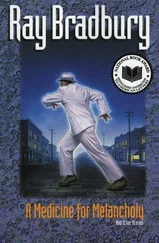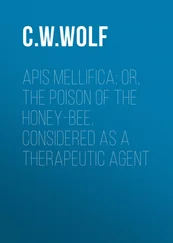One Health Issue: Planetary Health (Biodiversity and Climate Change)
The One Health concept is not new to veterinary medicine, but it is most timely now that we are facing multiple critical issues that involve our profession. Veterinary Medicine's greatest contributions to One Health have been in public health, particularly emerging zoonotic diseases, but environmental health has been largely neglected and requires our equal attention, now more than ever. Honey bees, native bees, bumble bees, and many other pollinators are the biosensors of our ecosystem health. Insects are the most diverse multicellular group of organisms on the planet – over one million species have been described, so far. And while the sheer biodiversity of insect species helps to ensure the group's survival, many of our pollinator species are in jeopardy. The decline of bees, as well as other animal pollinators, are in the public's consciousness, largely due to scientists' warning and media attention. Our ecosystems are out of balance. Habitat loss, pests and pesticide use, emerging diseases, and the extremes of global climate change all contribute to the instabilities we are experiencing. Veterinarians are trained problem solvers, but first we must recognize the problem. It is time our profession acknowledges and works to mitigate the challenges that climate change is having on animals and plant life, on agriculture, on zoonotic diseases, and on our environment. Mother Nature is relentlessly forcing us to face the threats of climate change and we must pursue all efforts to limit warming to 1.5°C.
One Health Issue: Food Security
Honey bee and pollinator health is crucial to our food supply. The pollination of flowering plants is an essential ecosystem service that produces the variety of vegetables, fruits, nuts, and seeds which, in turn, provide the necessary nutrients to sustain us, wildlife, and farm animals. The pollination services of birds, bats, butterflies, beetles, moths, ants, wasps, and the like, are vital to food systems – and to life itself. Without this variety of pollinators, we would not have the plant biodiversity that wildlife requires, or healthy soil and air. Without those things, we can never achieve global food security.
The public is increasingly aware that pollinators and honey bees are in trouble and people want to help. Hobbyist or “backyarder” and sideliner beekeeping has never been more popular, and veterinarians will be called upon more and more as we educate ourselves and the beekeepers learn our worth.
It is estimated that by 2050 there may be 9.8 billion people on earth and that global agriculture may need to increase by 30–70% in some areas. How will we feed a future population of 10 billion people? How will land and water resources be shared? How will we mitigate the increasing impact of global climate change on agriculture? Veterinarians will play an essential role in solving these issues. Food safety, food security, and public health are part of our jobs as veterinarians.
The honey bee is our top managed pollinator because it is the only bee that forms large colonies that can be transported in hive boxes. North America has the second largest commercial bee industry in the world. Today, millions of hives, the majority of the North American bee herd, are transported thousands of miles by truckloads around the United States and Canada to pollinate our food crops. The commercial beekeeper's life is a hard one – very labor intensive and with the new regulations, the spread of disease, increased fuel and transportation costs, and labor shortages, we are obliged to familiarize ourselves with their trade. Pollination services are a multi‐billion‐dollar industry.
Honey bees get the most “buzz” but actually some native bees are more efficient pollinators for some plants. Yes, honey bees are now considered livestock because we consume their products, but as far as getting pollen from one flower to another, honey bees are only one of a myriad of players. Native bees do not live in hives or colonies but in underground burrows. They come in all sizes and colors, and can be fuzzy, shiny, or metallic. They aren't as tidy, they don't pack pollen in little pouches, and they are messy. Farmers and producers have noted that when native bees are co‐pollinating with the honey bees, production is even better. New management in Integrated Crop Pollination uses a combination of native bees and honey bees with farm practice tools, like no‐till and cover crops, to increase production.
One Health Issue: The Global Epidemic of Antimicrobial Resistance
There is no doubt that antibiotic use improved the health of people and animals over the last 70 years. Antimicrobial resistance (AMR) is nothing new, it occurs in nature. Resistant genes are carried on plasmids (pieces of DNA) that are transferred between organisms. We now know that bacteria containing resistant genes can be transferred from livestock to humans via food. However, the misuse/overuse of antibiotics has led to the spread of resistant genes in medically important antibiotics and we now have diseases that are resistant to treatment. Multi‐drug resistant bacteria are a threat to global health.
While in much of the world veterinarians have had a decades' long interaction with apiarists, veterinarians in the United States officially joined the honey bee's medical team as a result of the implementation of the 2017 US Food and Drug Administration regulations on the use of medically important antibiotics in livestock. Honey bees were officially defined as food‐producing livestock in those regulations, putting their medical care into the hands of veterinarians. Writing Veterinary Feed Directives and prescriptions, however, should not be our profession's sole offering to honey bee medicine. Our expertise in herd health management will be an asset to the honey bee industry.
Antibiotic resistance has been documented in honey bees and we now know that there can be harmful effects on the honey bee microbiome. There is an increased effort to breed honey bees for hygienic behaviors to develop and enhance natural resistance.
Just as you don't have to own pigs to be a swine veterinarian, you don't have to be a beekeeper to treat bee colonies. But you do have to know the biology, physiology, and behavior of these magnificent animals in order to forge a Veterinary Client Patient Relationship (VCPR) and feel confident in your handling, diagnosis, and treatment of this species, Apis mellifera , new to our profession.
All the authors in this book recommend experience beyond “book learning” – so join a local bee club, help a beekeeper in the field, or start a few hives of your own.
Learn about the types of beekeepers you may be working with; backyard hobbyists with a few hives, sideliners (whose apiary is a secondary source of income) and commercial beekeepers with many hundreds, or thousands, of hives. Sideliners are nothing new to veterinary medicine as most of our cow‐calf and small ruminant clients have another primary source of income.
As with any other animal we work with, we need to know how to safely handle and manage bees. Will you get stung? Yes, you will. Know your response to bee venom in advance. Know the tools, equipment, and safety precautions you will be taking.
Once you have read the chapters on hive inspections and feel comfortable in a bee suit with insects flying all around you, quietly inspect the bee yard and hives. Observe the macro‐environment for food sources and the activity around the hives. When you are ready to do an internal inspection, look for the different caste members, brood, and food. Get to know normal smells, sounds, and patterns. And don't be frustrated if you can't find the queen – that takes lots of practice!
Читать дальше












